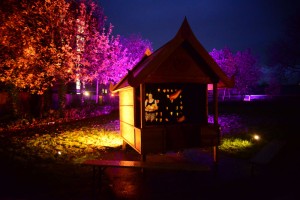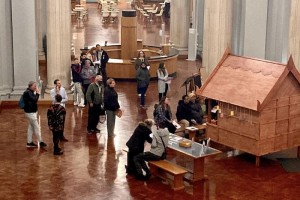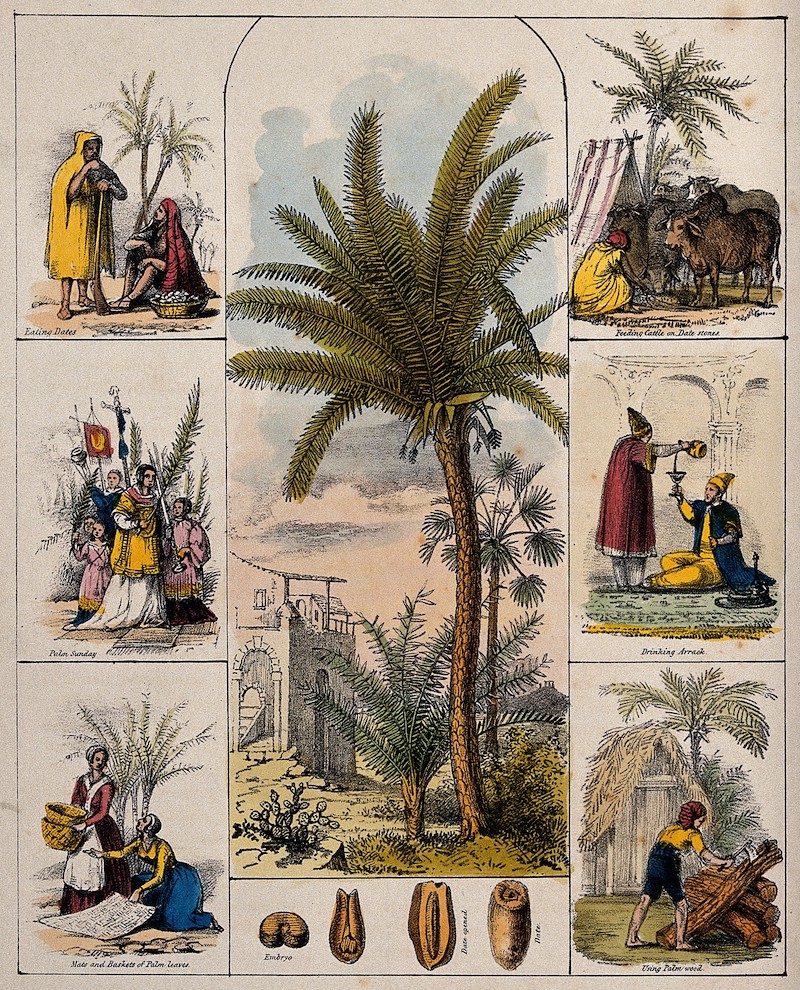
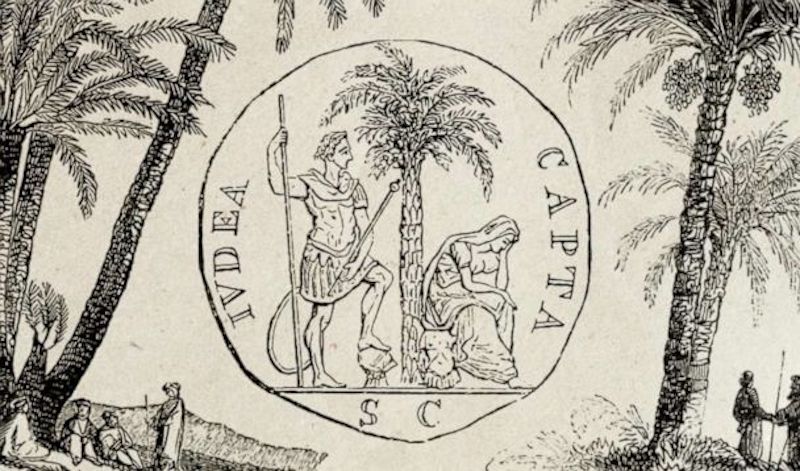
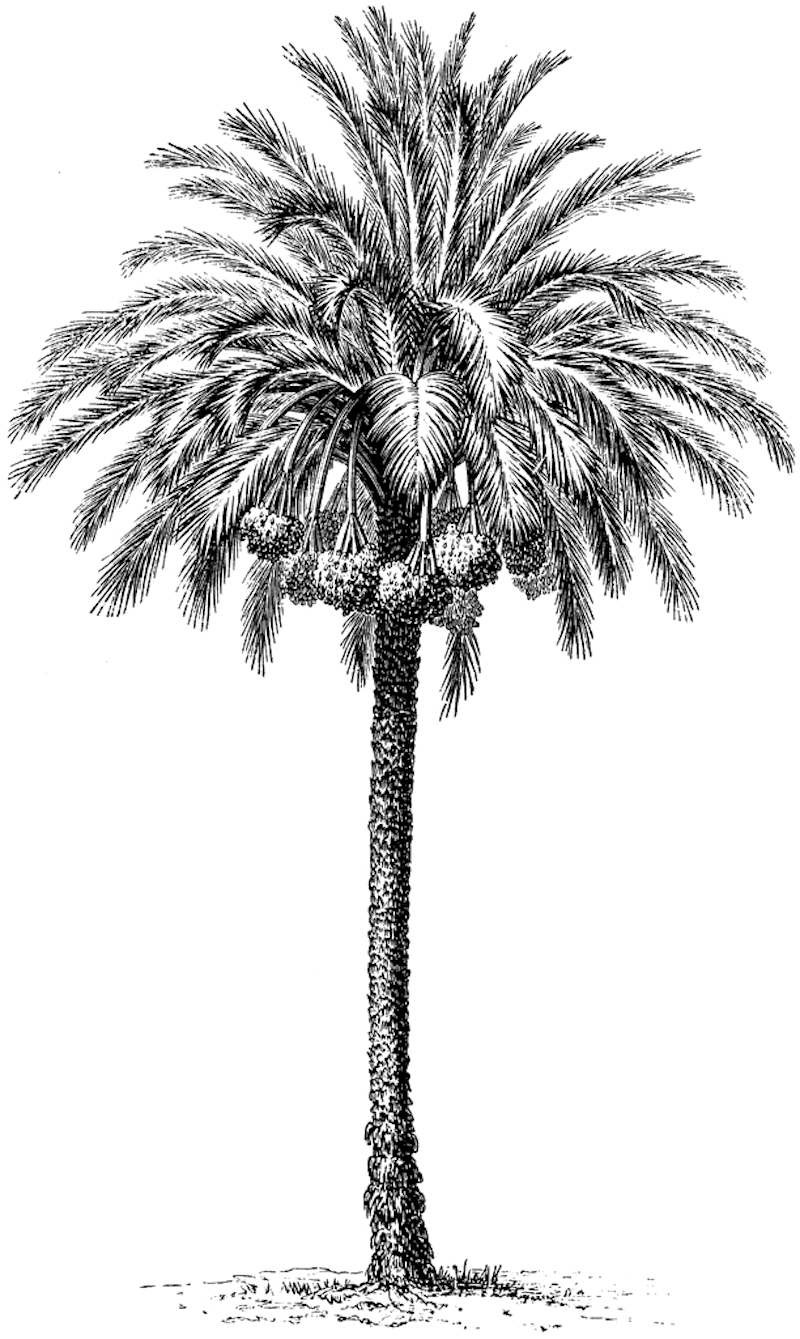
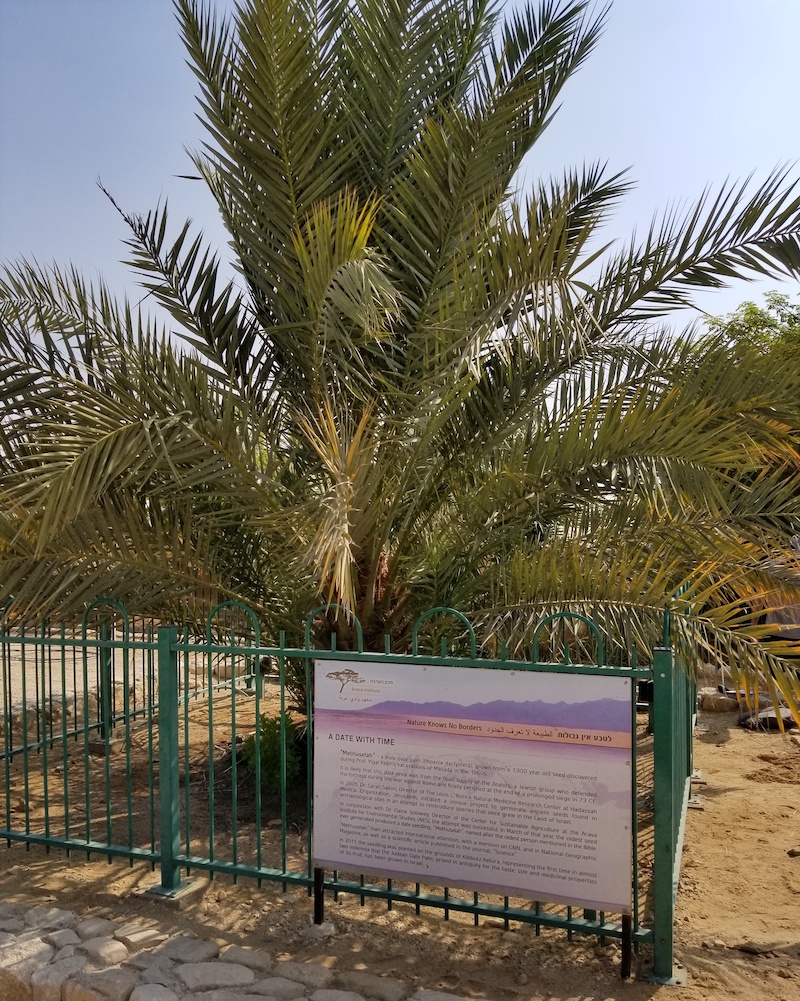
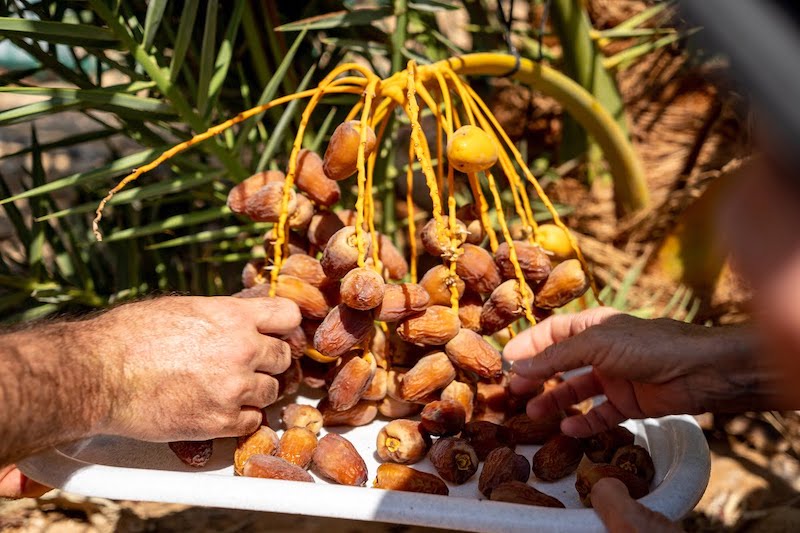
In 2005, a team of scientists sprouted a preserved 2,000-year-old seed, the oldest seed germinated with human-assistance.
Fruit of the date palm was considered a staple food in the Judaean Desert, as it was a source of food and its tree of shelter and shade for thousands of years, and became a recognized symbol of the Kingdom of Judah.
The book Plants of the Bible by Michael Zohary states: “The Hebrew word for the date palm is ‘tàmâr.’ … It became the Jews’ symbol of grace and elegance and was often bestowed by them to women.” For example, David’s beautiful daughter was named Tamar.
It is sometimes claimed that date growing as a commercial fruit export stopped at the end of 70 AD, when the Second Temple was destroyed by the Romans.[7] However, study of contemporary sources indicates that the date industry continued in Judea throughout the Roman period and that, indeed, the Roman Imperial treasury collected a good deal of the profits.[8] Asaph Goor, in his 21-page article History of the Date through the Ages in the Holy Land, never mentions any such Roman devastation of the date palms, but rather cites numerous contemporary accounts attesting to the continuing extent of date cultivation through the Roman period. Goor only detects a decline in date cultivation through the period of Early Arab rule and especially during the Crusades, when he notes that the devastation of the region was particularly hard on the palm plantations.
More info about the Judean Date Palm can be found here.


